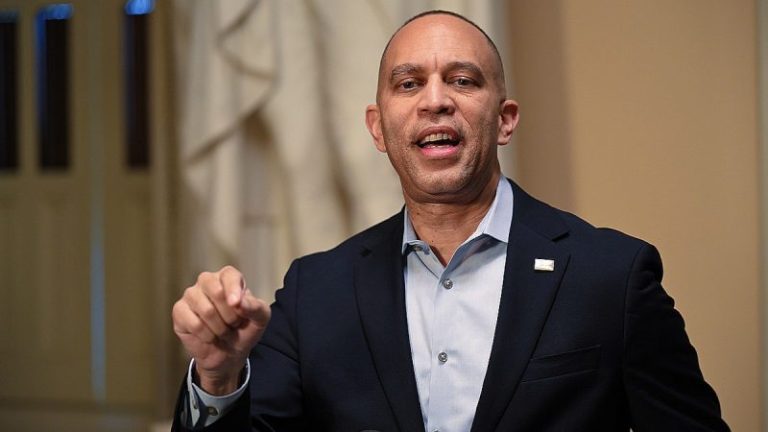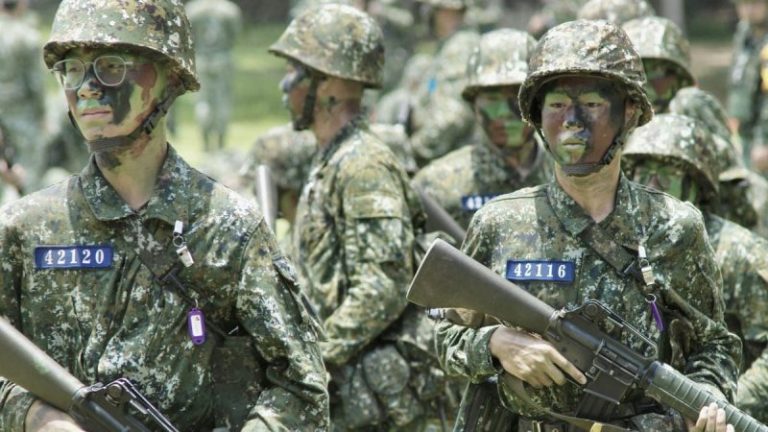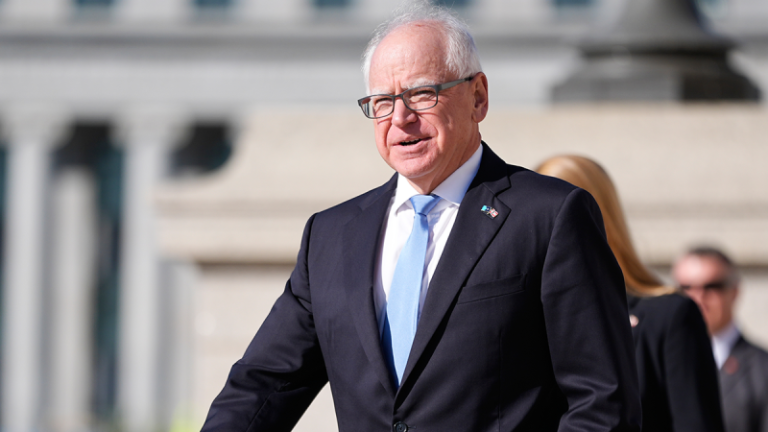Statistics Canada released November’s consumer price index (CPI) data on Monday (December 15). The data showed all-items inflation rose 2.2 percent compared to November 2024 and 0.1 percent on a monthly basis compared to October.
One contributor to the rise was a 4.7 percent year-over-year increase in grocery prices, higher than the 3.4 percent annual increase in October and the biggest since the 4.7 percent increase in December 2023.
On the other hand, gasoline prices decreased 7.8 percent year-over-year and natural gas decreased by 16.5 percent, although both drops were slightly lower than their respective 9.4 percent and 17 percent declines recorded in October.
StatsCan also released October’s monthly mineral production survey on Friday (December 19). The data reported that mineral production increased across a wide range of metals month-on-month, with iron concentrate the only one seeing a slight decline.
Gold production increased to 18,470 kilograms compared to 16,978 kilograms in September. Meanwhile, copper production rose to 41.34 million kilograms from 36.23 million kilograms, and silver production jumped to 31,522 kilograms from 28,384 kilograms.
Shipments, however, decreased broadly in October. Gold shipments fell to 15,563 kilograms from 19,025 kilograms, and silver shipments sank to 31,502 kilograms from 33,296. Copper shipments fell more considerably to 36.22 million kilograms from 44.04 million kilograms.
Also this week, the Canadian Government approved the merger between mining giants Teck Resources (TSX:TECK.A,TECK.B,NYSE:TECK) and Anglo American (LSE:AAL,OTCQX:NGLOY) on Monday.
The move clears a major regulatory hurdle for the C$70 billion deal. Federal Industry Minister Mélanie Joly said that as part of the approval process, the companies agreed to spend C$4.5 billion in Canada over five years and employ 4,000 Canadian workers.
Once the deal is finalized, the combined company will be called Anglo-Teck and will be headquartered in Vancouver, making it the largest company in British Columbia’s history.
For more on what’s moving markets this week, check out our top market news round-up.
Markets and commodities react
Canadian equity markets were mixed this week.
The S&P/TSX Composite Index (INDEXTSI:OSPTX) was little changed, gaining just 0.14 percent over the week to close Friday at 31,755.77, while the S&P/TSX Venture Composite Index (INDEXTSI:JX) fared a little better, rising 1.04 percent to 977.98.
On the other hand, the CSE Composite Index (CSE:CSECOMP) fell 8.37 percent to close at 168.68 after rising significantly last week.
The gold price continued an upward trend following last week’s rate cut from the US Federal Reserve. It gained 1.36 percent on the week to reach US$4,338.24 per ounce on Friday at 4 p.m. EST.
Meanwhile, the silver price continued to set new records with another substantial weekly gain of 5.75 percent, reaching a new high of US$67.45 per ounce in morning trading on Friday before slipping to end the day at US$67.18.
In base metals, the COMEX copper price ended the week up 0.73 percent at US$5.50 per pound.
The S&P Goldman Sachs Commodities Index (INDEXSP:SPGSCI) fell 1.47 percent to end Friday at 542.19.
Top Canadian mining stocks this week
How did mining stocks perform against this backdrop?
Take a look at this week’s five best-performing Canadian mining stocks below.
Stocks data for this article was retrieved at 4:00 p.m. EST on Friday using TradingView’s stock screener. Only companies trading on the TSX, TSXV and CSE with market caps greater than C$10 million are included. Mineral companies within the non-energy minerals, energy minerals, process industry and producer manufacturing sectors were considered.
1. Pacific Empire Minerals (TSXV:PEMC)
Weekly gain: 200 percent
Market cap: C$30.36 million
Share price: C$0.15
Pacific Empire is a gold and copper exploration company focused on its flagship Trident property in central British Columbia, Canada.
Trident consists of a land package covering 6,618 hectares within the Quesnel Terrane and has a history of exploration dating back to its discovery in 1969. The property hosts porphyry mineralization of copper, gold, and silver, with historic drill results at the site including one 102 meter interval grading 0.59 percent copper and 0.24 grams per metric ton (g/t) gold.
Shares in the company gained significantly this week after it released assay results from the upper portion of the first hole of its 2025 winter diamond drill program.
Results from the hole started at a depth of 9 meters and hosted continuous copper-gold mineralization to a depth of 192 meters.
The broad 183 meter interval returned average grades of 0.77 percent copper, 0.51 g/t gold and 3.4 g/t silver over 183 meters. Within that were intervals of 71 meters grading 1.06 percent copper, 0.83 g/t gold and 4.6 g/t silver, and 14.8 meters grading 1.23 percent copper, 0.75 g/t gold and 5.5 g/t silver.
Pacific Empire said the result was the most substantial copper-gold mineralization recorded at Trident to date and that it advances the geological understanding and exploration model for what could be significant porphyry system.
Assays for the lower portion of the first hole and the remaining five holes drilled as part of the campaign are pending.
2. US Copper (TSXV:USCU)
Weekly gain: 72.22 percent
Market cap: C$17.75 million
Share price: C$0.155
US Copper is an exploration company working to advance its Moonlight-Superior project in Northeast California, United States.
The project covers approximately 13 square miles of patented and unpatented federal mining claims in the Lights Creek Copper District, near the Nevada border.
A preliminary economic assessment released on January 6 demonstrated a post-tax net present value of US$1.08 billion with an internal rate of return of 23 percent and a payback period of 5.3 years, assuming a copper price of US$4.15 per pound.
The included mineral resource estimate shows a total indicated resource of 2.5 billion pounds of copper, 21.7 million ounces of silver and 140,042 ounces of gold from 402.83 million metric tons of ore with a grade of 0.31 percent copper, 1.85 parts per million (ppm) silver and 0.012 ppm gold. The majority is hosted at its Moonlight and Superior deposits.
US Copper has not released news since October 14 when it announced the closing of a non-brokered private placement for gross proceeds of C$750,000.
3. Euromax Resources (TSXV:EOX)
Weekly gain: 66.67 percent
Market cap: C$18.87 million
Share price: C$0.025
Euromax Resources is a development and exploration company working to advance its Ilovica-Shtuka copper project in the southeast of North Macedonia, Europe.
The advanced stage project is composed of two concession agreements that cover 17.1 square kilometers and hosts mineralized deposits of copper and gold.
The most recent feasibility study for the Ilovica-Shtuka project, released in 2016, demonstrated a sulphide mineral resource with measured and indicated quantities of 2.6 million ounces of gold and 1.2 billion pounds of copper, with additional oxide quantities of 280,000 ounces of gold.
Shares in Euromax gained this week after it announced on Monday its intention to issue 122.1 million common shares through a non-brokered private placement, generating proceeds of C$3.97 million.
4. Lode Gold Resources (TSXV:LOD)
Weekly gain: 54.67 percent
Market cap: C$10.61 million
Share price: C$0.325
Lode Gold Resources is an exploration company with projects located in Canada and the United States, including its Fremont gold project in California, US, which hosts a past-producing high-grade gold mine.
The mine sits on 3,351 acres in Mariposa County, which has been mined since the start of the California gold rush in the 1840s.
On March 5, Lode Gold released a technical report for the property, which included an updated mineral resource estimate demonstrating an indicated resource of 120,000 ounces with an average grade of 4.13 g/t gold from 910,000 metric tons of ore, with an additional inferred resource of 1.9 million ounces with a grade of 3.96 g/t from 8.53 million metric tons of ore.
The most recent news from the project came on December 9, when Lode announced that it had entered into a letter of intent with an unnamed mining company to begin work advancing the Freemont project toward production.
As part of the deal, the parties agreed to a 45 day standstill period during which Lode will work to raise capital and repay outstanding debts.
Additionally, Lode announced on December 12 that it was appointing David Swetlow as Lode’s new CFO. He has previously worked as CFO for Lode’s subsidiary, Gold Orogen, which was created to spin off its Yukon and New Brunswick properties.
The spin-off was announced in July 2024 as part of Lode’s restructuring bid and would include its Golden Culvert, Win, and McIntyre Brook properties.
5. Canadian Chrome (CSE:CACR)
Weekly gain: 50 percent
Market cap: C$24.71 million
Share price: C$0.015
Formerly KWG Resources, Canadian Chrome is a chromite and base metals exploration company focused on moving forward at its Ring of Fire assets in Northern Ontario, Canada. It does business as the Canadian Chrome Company.
The firm’s properties consist of the Fancamp and Big Daddy claims, along with the Mcfaulds Lake, Koper Lake and Fishtrap Lake projects. All are located within a 40 kilometer radius, and according to the company are home to feeder magma chambers containing chromite, nickel and copper deposits.
Canadian Chrome is currently working with local First Nations to improve transportation to the region by developing road and rail links. The company announced on November 7 that it had signed a memorandum of agreement with AtkinsRéalis Canada in its capacity as a contractor representing the Marten Falls and Webequie First Nations.
The agreement will allow AtkinsRéalis temporary access rights over some mineral exploration claims in support of work permits for an environmental assessment for the design, construction and operation of a multi-use, all-season road between the proposed Marten Falls community access road and the proposed Webequie supply road.
Once completed, the link will provide improved access to communities and mining companies in the region.
On September 11, Canadian Chrome signed an additional agreement with AtkinsRéalis that will provide the firm access rights to parts of the claims for 13 borehole locations for geotechnical investigations and aggregate source testing.
The most recent news from the company came on December 11, when it set the terms of a C$25 million non-brokered private placement originally proposed on August 26. Changes to the original terms were made following the inclusion of chromium as a critical mineral in the Canadian federal budget announced on November 4, which allows investments in chromium projects to qualify for additional tax credits.
The new terms state that, with every 10 flow-through shares subscribed, five flow-through share purchase warrants will be issued, each entitling the holder to purchase one additional flow-through share for C$2.50 at any time within one year.
FAQs for Canadian mining stocks
What is the difference between the TSX and TSXV?
The TSX, or Toronto Stock Exchange, is used by senior companies with larger market caps, and the TSXV, or TSX Venture Exchange, is used by smaller-cap companies. Companies listed on the TSXV can graduate to the senior exchange.
How many mining companies are listed on the TSX and TSXV?
As of May 2025, there were 1,565 companies listed on the TSXV, 910 of which were mining companies. Comparatively, the TSX was home to 1,899 companies, with 181 of those being mining companies.
Together, the TSX and TSXV host around 40 percent of the world’s public mining companies.
How much does it cost to list on the TSXV?
There are a variety of different fees that companies must pay to list on the TSXV, and according to the exchange, they can vary based on the transaction’s nature and complexity. The listing fee alone will most likely cost between C$10,000 to C$70,000. Accounting and auditing fees could rack up between C$25,000 and C$100,000, while legal fees are expected to be over C$75,000 and an underwriters’ commission may hit up to 12 percent.
The exchange lists a handful of other fees and expenses companies can expect, including but not limited to security commission and transfer agency fees, investor relations costs and director and officer liability insurance.
These are all just for the initial listing, of course. There are ongoing expenses once companies are trading, such as sustaining fees and additional listing fees, plus the costs associated with filing regular reports.
How do you trade on the TSXV?
Investors can trade on the TSXV the way they would trade stocks on any exchange. This means they can use a stock broker or an individual investment account to buy and sell shares of TSXV-listed companies during the exchange’s trading hours.
Article by Dean Belder; FAQs by Lauren Kelly.
Securities Disclosure: I, Dean Belder, hold no direct investment interest in any company mentioned in this article.
Securities Disclosure: I, Lauren Kelly, hold no direct investment interest in any company mentioned in this article.










